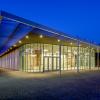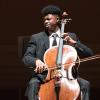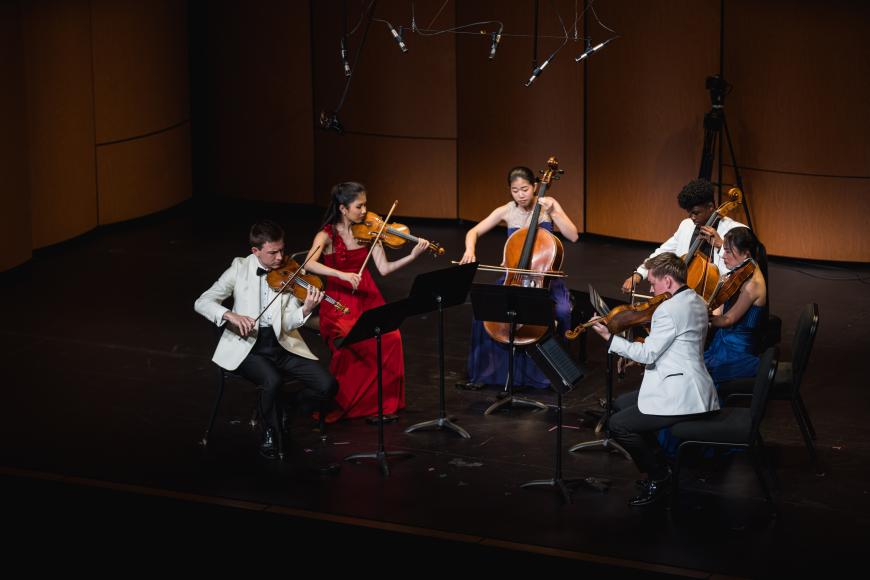
Music@Menlo has marked simultaneously the return of live musicmaking to the area and the opening of its new venue, the Spieker Center for the Arts, at the Menlo School in Atherton. The occasion was the three half-length (hour-long) programs of the first weekend of its trimmed-down summer season. I attended the third concert, on Sunday, July 18.
Restrictions were strict. The hall, small as it is (384 seats), was less than half-full to allow for social distancing, and attendees were required both to be vaccinated and to wear masks.
The rewards for attending, however, were great. Spieker is wedge-shaped, lined mostly with panels of curved wood, raked at a medium angle, and fine-tuned acoustically so that distance from the stage makes little difference in the sound heard. Far from warm or enveloping, Spieker’s acoustic is cool and intimate.
This intimacy shows its admirable quality in delineating and separating the sounds of string instruments. Johannes Brahms, who tends to blend his instruments’ sounds together into a unified whole, would seem a poor choice of composer to test this with. But his String Sextet in B-Flat Major, Op. 18, revealed dramatically what Spieker can do. The acoustics boldly separated Brahms’s lines. In the Sextet’s Scherzo, where Brahms allows the sound to break up slightly, it was possible to hear all six instruments individually at once with unusual clarity.
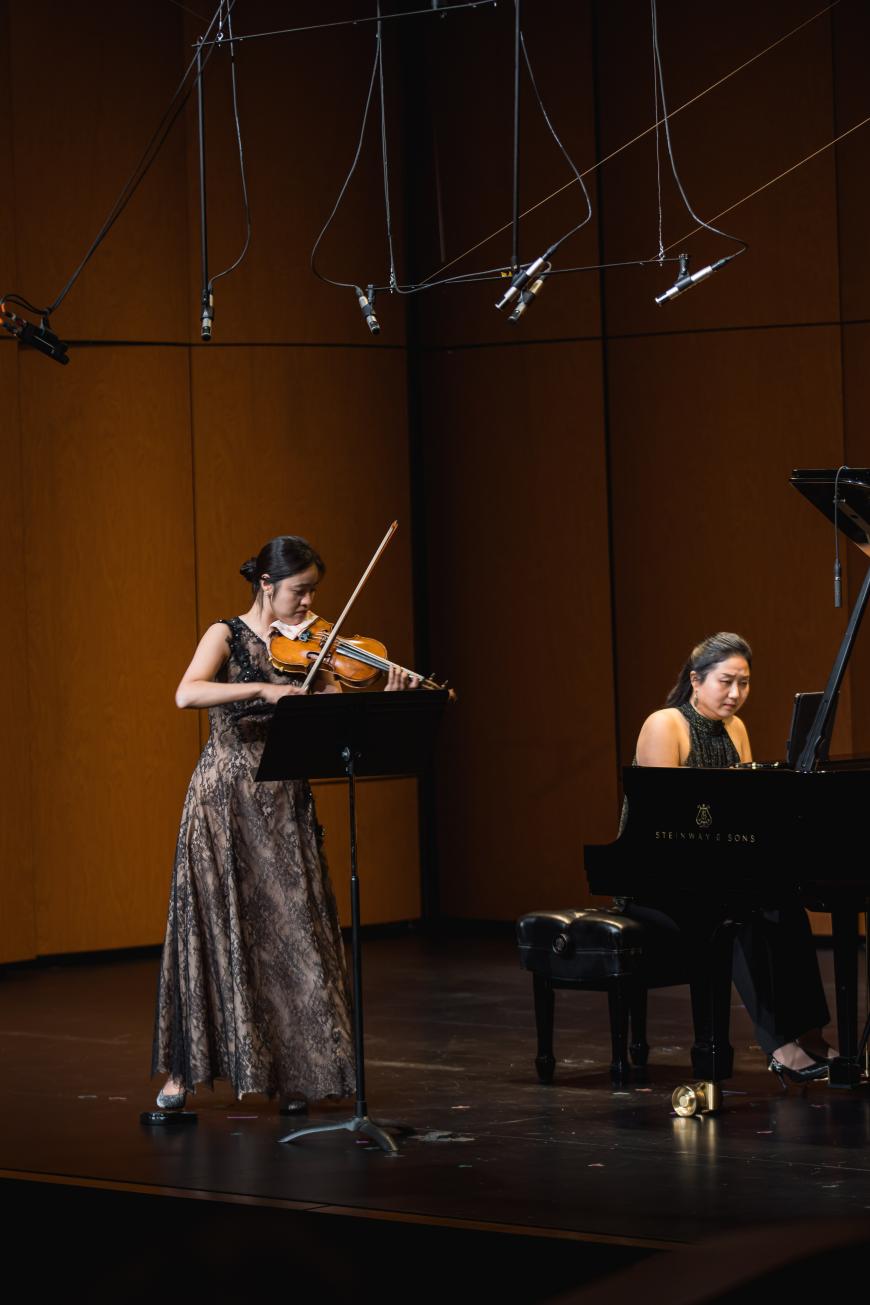
Even elsewhere in the work, inner lines would often pop out through the mixture, allowing for appreciation of the individual contributions of the second chair players, violinist Angela Wee, cellist Sterling Elliott, and especially violist Tien-Hsin Cindy Wu, who pursued some of her solo lines with blistering dedication.
Overall, the Brahms was an ideal performance, one of Menlo’s best. It was a thing of beauty tempered by energy, driven by a strong clarifying pulse, especially in the formal Andante variations. The first-chair instrumentalists were as admirable as their seconds. James Thompson was a strong leader at first violin, matched by Matthew Lipman in all the unusual music Brahms writes for first viola. Lipman notably gave a clean and charming rendition of the music-box passage at the end of the Andante. Audrey Chen delivered all the first cello solos with lyricism of dramatic intensity.
Chen, Wee, and Elliott are notably all young professionals of Menlo’s International Program, promoted this year to share a stage with their seniors, and Wu is also a first-year performer for Menlo. Unquestionably, they all belonged right where they were.
Spieker’s acoustics can be a bit more problematic when combining a piano with strings, and this showed itself in Leoš Janáček’s Violin Sonata, performed by International Program violinist Yeri Roh and veteran Menlo pianist Hyeyeon Park. This is an inherently imbalanced work anyway, with often fragmentary violin lines contending with strong attacks from the piano. Park is a careful pianist, melting Janáček’s percussiveness into light and evenly-paced impressionism whenever the dynamics permitted, but in this hall the piano was naturally broader and bolder than the violin. The instruments were better balanced in the outdoor second performance in the school’s Middle School Courtyard later in the day.
Despite any questions of balance, Roh completely conquered this querulous violin line. She brought out all the lyricism Janáček has to offer and found rhythmic pattern in his fragmentary outbursts. At one point in the outdoor concert, the tip of her bow hit one of the strings of lights strung across the tops of the tent poles. This was surely a disconcerting moment for a violinist, but Roh proceeded past it with aplomb.
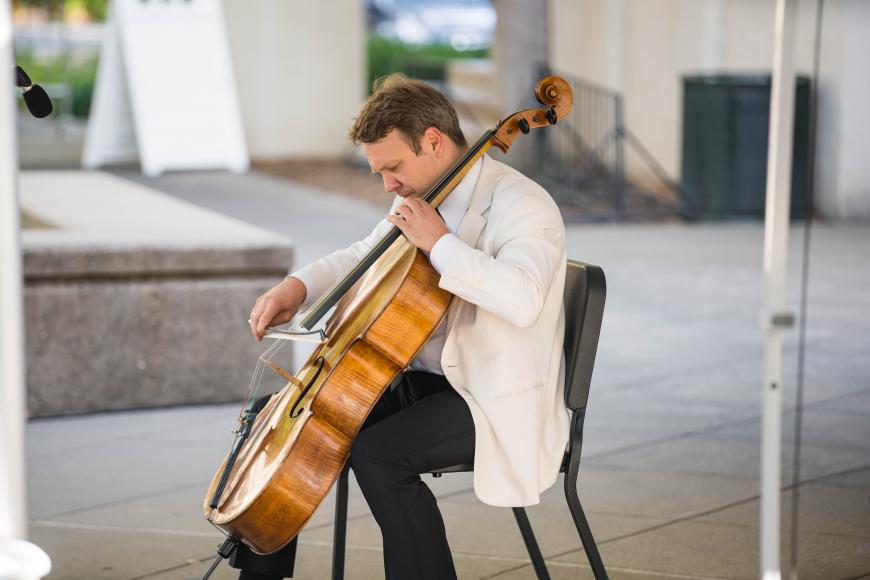
The concert’s remaining work was as ideally suited for Spieker as was the Brahms. György Ligeti’s virtuosic Sonata for Solo Cello was performed from memory by Dmitri Atapine. This was a student work, written when Ligeti was still heavily influenced by Kodály and Bartók. Listeners to Atapine’s online talk the previous day, on folk influences on Central and Eastern European chamber music, could make special note of the emphasis on Hungarian folk rhythms that Atapine brought to his slow and soulful performance of Ligeti’s opening movement.


